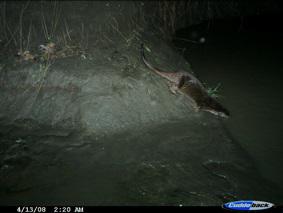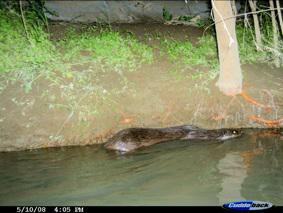George Gorgadze
Other projects
13 Mar 2012
Assessing the Status and Distribution of Eurasian Otter for Better Conservation and Management in Georgia
The aim of the study is to identify patterns in otter behaviour, which make it predictable and thus help local farmers to protect their fish farms. The project objectives are identifying animal home range, movement and seasonal diet along a pilot study area near fish farms.

This study will be aimed at the conservation of the Eurasian otter in the South-eastern part of Georgia. As the top predator in aquatic ecosystems the otter is considered an important biological indicator of the health of rivers and wetlands. Monitoring the status and distribution of the otter population therefore gives us a good measure of the state of aquatic ecosystems, and will help us to preserve their habitats. In the past, the Eurasian otter was widespread throughout the country. At the end of last century the number declined dramatically caused by poaching and the fur trade. Now the otter is listed in the Red List of Georgia under the category “Vulnerable to extinction” and the population is spread only along the biggest rivers of Georgia. Our research in the South-eastern part of Georgia on the river Alazani during the last two years has shown that one of the main reasons for the decline in the otter population is conflict with humans.

The study site is the river Alazani basin where more than 120 of the largest ponds of the country produce marketable fish. Our research has shown that otters leave natural water ecosystems during some seasons and predate in fish farms. Fish losses create human-wildlife conflict. Fishermen see otters as their competitors, resulting in their persecution and death at every convenient occasion. Otters are illegally trapped using leg-hold traps set around rivers, streams and especially fish ponds.